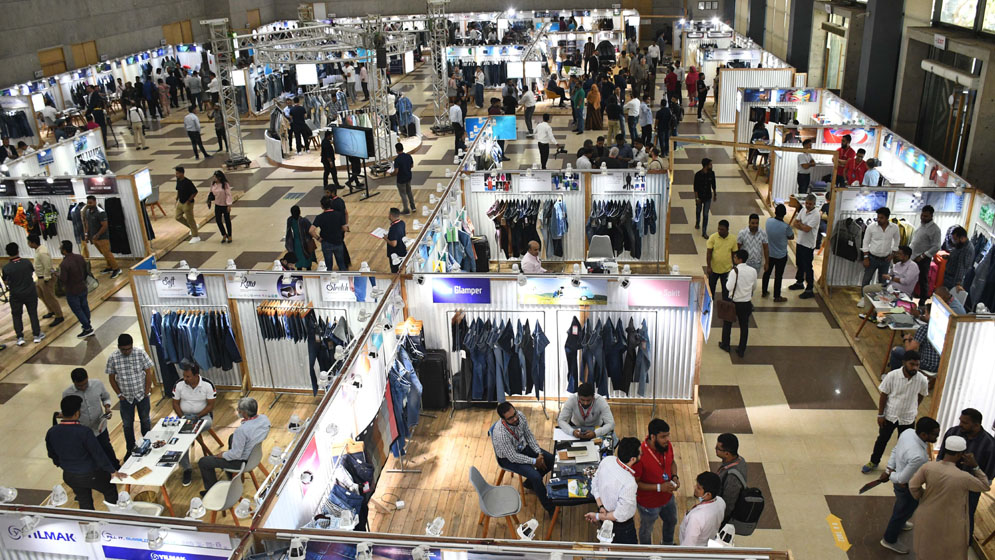Week ends with few disruptions in RMG zones
Manufacturing activities at the readymade garments (RMG) factory units at major industrial hubs like Savar, Ashulia, Gazipur, and Dhaka were normal despite some areas experiencing a fresh wave of labour unrest.
Although there were no reports of factory closures in Ashulia, five factories were declared closed in the Savar area, and 32 factories were declared closed in Gazipur on Thursday.
Industry insiders said that most of the factories agreed with the workers’ 18-point demand, but still, unrest arose. They said there has been involvement of vested interest groups who want to destabilize the sector and pressure the government.
On the other hand, labour leaders said that only the factories in Ashulia fully accepted the 18-point demand, while the factories of the other areas have yet to do so, or there are communication gaps between the workers and the manufacturers, which created chaos.
Gazipur; epicentre of the fresh unrest
With the permanent closure of Generation Next Fashion of Ashulia earlier this week, the hub is now somewhat free from labour unrest.
However, the Mouchak, Konanari, Shafipur, and Chandra areas of the Gazipur industrial hub emerged as a new epicentre of labour unrest, as 32 RMG factory units were declared closed on Thursday.
Meanwhile, among 32, 14 factory units are owned by three groups, Islam Group, Tusuka Group and TNZ Group, where another 18 medium and large-scale factories were also closed.
Talking to the Dhaka Tribune, Md Tareque Hassan of Tusuka Group said that although they accepted the workers’ 18-point demand, they are still demonstrating.
“They present different demands at different times, most of which are illogical. Maybe some external forces are fueling them to destabilize the sector and pressure the government,” he added.
He also said that they want to resume operations on Saturday with only the workers who want to do work. The workers who were involved in vandalism and unlawful activities will be terminated.
Meanwhile, according to sources, more than 200 workers in Tusuka factories were terminated on Thursday afternoon under Section 26 of the Bangladesh Labour Act, meaning they would get their all-termination benefit.
Regarding the termination, Md Ashrafuzzaman, Organizing Secretary of Jatiyo Garments Sromik Jote Bangladesh, told Dhaka Tribune that the factory authority did not disclose whether the termination occurred due them to being involved in protests.
“More than 200 workers were terminated. We contacted the director, and he said that the terminated workers would get all termination benefits under Section 26 of the BLA. They sent the termination message to the workers’ mobile number and issued a notice on the notice board,” he added.
Factories of Islam Group in the same areas have also been declared closed for the last few days.
Talking to Dhaka Tribune, Shahrier Ahmed, managing director of Islam Garments (U-2), said that they have no issues with wage arrears and also accepted an 18-point demand.
“We are still in the dark about why there was unrest by workers in our factories. With the help of labour leaders, joint forces and authority, we are trying to restore normalcy in the factory. Hopefully, we will resume operation on Saturday,” he added.
Moreover, three TNZ Group factories have been closed for more than two weeks due to wage and allowance arrears.
A senior official told the Dhaka Tribune that they are trying to arrange the required finance, and once they have done so, the factory will resume operation soon.
No incidents of factory closure were reported in Savar and Ashulia on Thursday, but five factories were declared closed there.
Labour leaders urge for more dialogue
The labour leaders said that more dialogue between the manufacturers and workers can reduce the chance of unrest.
Talking to Dhaka Tribune, Babul Akhter, general secretary of Bangladesh Garment and Industrial Workers Federation, said that although all Ashulia factories accepted the 18-point demand, a number of Gazipur and Savar factories have yet to do so.
“There is a chance that even if they agree to the demands, they might not effectively communicate them to the workers. Therefore, I always stress the importance of dialogue. Manufacturers should take the initiative to listen to the workers’ demands directly,” he added.
If they accept any demands, they must inform the workers officially. He also mentioned that dialogue can help prevent the involvement of vested interest groups and their influence.
A top BGMEA official told the Dhaka Tribune that most Gazipur factories provide workers with benefits. However, workers now demand the dismissal of several mid-level and higher-level management personnel, and each time their demands are satisfied, they make new ones.
Given the current circumstances, the manufacturers have been forced to announce closures under the labour law’s “no work, no pay” provision. Unfortunately, workers may bear the brunt of the unrest.
To address the issue, the BGMEA has already met with factory owners in Gazipur and local law enforcement agencies to understand the situation better and establish the best measures.
However, a former director of the Bangladesh Garment Manufacturers and Exporters Association (BGMEA) said that after accepting all 18-point demands, why is there still unrest?
“Maybe there are influences from the outsiders, or it may be intentional unrest. A third party wants to spread the unrest to the nearby factories. If it is a factory-specific issue for specific demands, it will not spread to other factories,” he added, saying that the joint force has to step forward and take strict measures against the vandalization.
Meanwhile, no factory closures were reported in the Dhaka area on Thursday.
Moreover, during the protests, the Chittagong, Narayanganj, and Narsingdi area factories also witnessed zero factory closure incidents.
On Thursday, 98.74% of the 397 factories in Savar and Ashulia remained operational. In Gazipur, 96.33% of the 871 factories were functioning, and in the DMP area, 100% of 301 factories were operational.
Nationally, 98.25% of factories operated normally, or 2,082 out of 2,119.




















